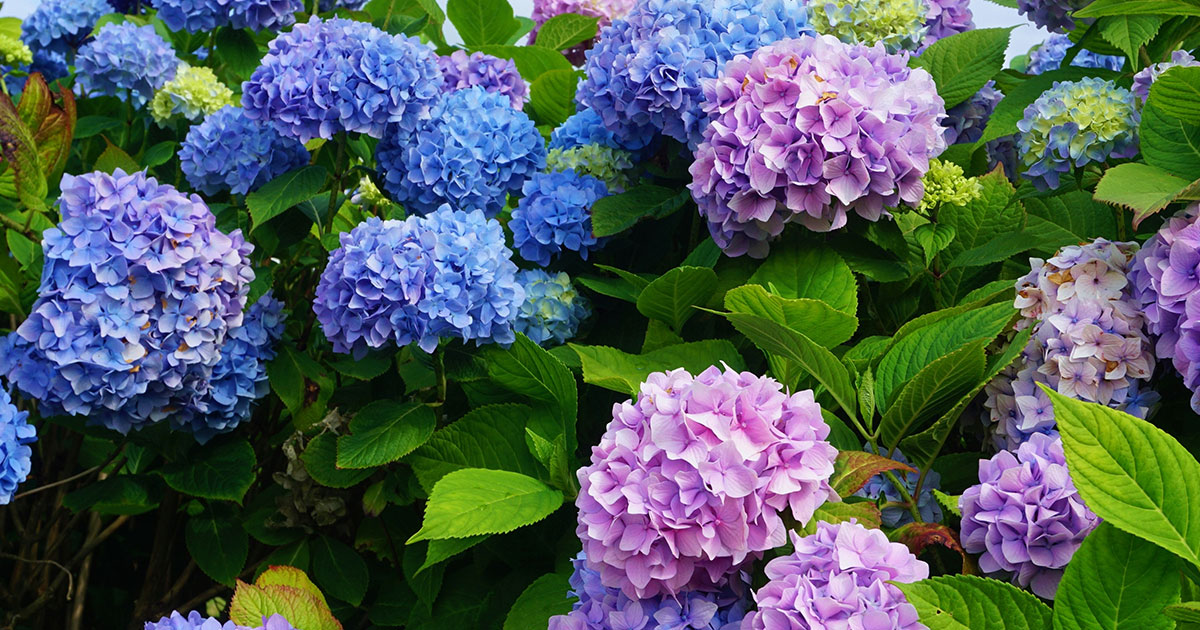A private oasis in your very own backyard brings images of floral colors and tranquil moments. Just the mere thought of opening a door and walking onto stones or lush grass, hearing birds and blocking out noise has the potential to lower stress. The first thought may be a fence, an automatic screen of wooden boards standing five to six feet in height. Would you feel too enclosed by those defined corners and borders? Are you willing to add scraping, sanding, and painting to your annual maintenance? Alter your mindset slightly and you can achieve privacy through a green screen of living plants, comprised of trees or shrubs, and a decorative element of vines. While you may have to compromise on the time period, there are wonderful selections available that are both easy to grow and an inexpensive alternative to fencing. Plus, you can choose more than a plant to achieve beauty and maintain a happy relationship with your neighbors, on all sides!
Here are a few options to consider:
Trees: While arborvitae and the Leyland Cyprus are popular options for a privacy fence due to its ability to create a dense hedge, the variety, especially of arborvitae is important. Depending on your available space, the “emerald arborvitae,” for instance, can extend up to 15 feet tall and spread to four feet at maturity. Evergreen trees used for privacy screens are low maintenance, but you will have to wait until the tree grows to the desired height.
Shrubs: The green shrub typically requires pruning and bi-annual care. If you hope to create a low maintenance “oasis,” try a native viburnum, which, depending on the variety, develops a flower, often not fragrant, resembling either a hydrangea or a snowball-like-cluster. The viburnum is a low maintenance shrub, and would make a wonderful privacy screen. One variety to consider is the snowball viburnum bush. (Other types of shrubs to consider are the weigela, the French lilac, and the Nikko Blue hydrangea!)
Vine: For areas you may want to conceal, vines provide an ornamental appeal as well as a softer look. Whether the vines are held by wooden beams connected with a heavy gauge wire, an arbor, or trellis, the “right” vine can bring a more natural look to your yard. Make sure your structure is solid because these plants can become quite heavy as they mature. Be aware of how the vine attaches. In vines such as the clematis or climbing hydrangea, a small stem will extend until it can twirl around a support, such as a wire or a branch. Vines that do not have support, such as the climbing rose, will wind themselves through and around their support system without guidance. (Be wary of climbers such as Virginia Creepers, that use adhesive pads to attach to flat surfaces. Removing can damage any surface.)
Willow’s Allure: Saving the best for last, I present the willow. The unique term “fedge” is a combination of a fence and hedge. The process begins by making a small hole to insert the willow cutting at an angle, which resembles a semi-large rod. Two rods will be tied at the top together, creating a lattice fence. As the willow grows, you will be able to manipulate the design and the height. The overall appearance is quite appealing. One of the most attractive aspects of this type of privacy fence is a fast grower. Willow can be cut and planted. (Willow rods are inexpensive; yet, can only be purchased online. While 35 rods are needed for every 10 feet, you’ll be able to use cuttings for the purpose of planting.)
Invasive Species: It is important to research the tree, shrub, or vine first to ensure it is the right dimensions for your location. Be careful when reading wording such as “rein it in with frequent pruning.” Private hedges, morning glories, Wisteria, the trumpet and the chocolate vine, are prime examples of fast growing species that can quickly become invasive, and take over your yard, and your neighbors’ yards.
If you enjoy the walk from door to backyard, creating a beautiful space takes time. Thoroughly research the trees, shrubs, and vines you choose to plant. While beautiful in color of leaf or flower, the “right” choice will make the difference between your time and contentment!






















